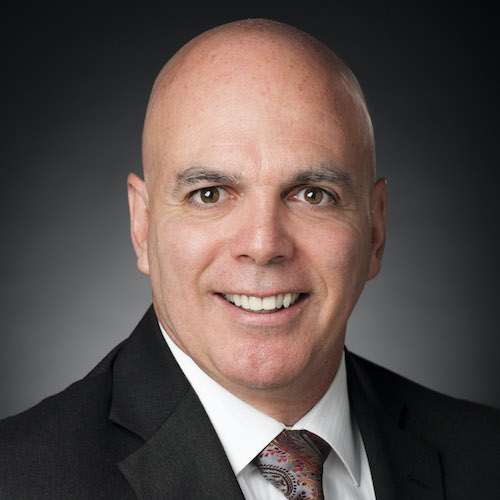
Expect 2023 to be a big year for Programs of All-Inclusive Care for the Elderly (PACE), which have been gaining attention since the COVID-19 pandemic drew public attention to failures in the health care system. The PACE Innovation Act allows pilot programs to expand their reach, and the Alliance for PACE Innovation and Quality has launched a new project in 2023 designed to hit a target of 200,000 PACE participants in five years.
With that in mind, HomeCare talked to Carlos Perez, executive vice president of CareVention HealthCare, which is a division of Tabula Rasa HealthCare. Tabula Rasa (TRHC) helps PACE and other value-based organizations manage complex patients through an integrated suite of solutions. Founded in 2009, it was the first medication risk management and home delivery pharmacy tailored for the PACE model of care; it now serves 90% of PACE organizations nationwide. Perez is a registered nurse who has worked extensively in PACE.
HomeCare: Why is medication management so important? What role does it play in care management?
Perez: Modern, sophisticated medication therapy helps improve wellbeing for patients by reducing their risk of harm. In PACE, patients often have multiple chronic conditions, so their daily drug routines can be quite complex. Prescriptions can interact with each other as well as with over-the-counter drugs, supplements, and herbals, significantly increasing risk of adverse interactions.
Importantly, optimizing drug therapy is not one-size-fits-all. It depends on all the medications a person takes as well as genetic factors that might impact their response to certain drugs. For example, common opioids might be less effective if someone lacks specific genes or if they take certain medications – including over-the-counter drugs – that interact with the opioids. In either case, if higher and higher doses of an opioid are prescribed, it will only marginally increase effectiveness but create much greater risk of unintentional overdoses. By optimizing drug therapy and decreasing the risk of harm, we help patients avoid emergency department visits and hospitalizations, plus associated home care, physical therapy, and medical follow up.
HomeCare: What role do PACE organizations play in helping to manage medications?
Perez: PACE programs are uniquely positioned to provide participants enrolled in their programs with comprehensive wrap around care using an interdisciplinary approach. Through our partnerships with PACE organizations, our clinical pharmacists collaborate closely with PACE prescribers to optimize drug therapy. Our pharmacists are board certified in geriatric pharmacy and use MedWise® Science, our proprietary medication management and risk mitigation technology, to help continuously optimize individual medication therapies helping to reduce key areas of risk for patients.
Pharmacists are available around the clock to further support prescribers, who ultimately make clinical decisions – like whether to start, stop, or change a medication or its dose. This level of consultation helps prescribers make more informed decisions and ultimately results in better outcomes for patients.
HomeCare: What are some of the failings you see surrounding care coordination, including for managing meds?
Perez: Care coordination is a challenging proposition for many organizations, particularly those servicing aging populations. Health literacy issues and fragmented support structures often leave these individuals vulnerable and lacking the comprehensive support they need to stay healthy. One example of the fragmentation is found in the traditional approach to managing medications, which looks at whether one drug interacts with another. This one-to-one approach does not identify the risk of simultaneous, accumulative, multi-drug interactions. In addition, the traditional approach does not typically incorporate genetic analysis. A person’s genetic makeup determines their ability to metabolize specific drugs, including common medications, like certain antidepressants and beta blockers. If a person can’t properly metabolize these drugs, they may not work as intended, putting that person at increased risk of harm. Without coordination of care, individuals may be alone to manage the potential for adverse medication events without supervision and support.
HomeCare: How can pharmacies, physicians and PACE organizations better coordinate care for vulnerable seniors?
Perez: PACE organizations can work with a dedicated partner like TRHC to better coordinate care for patients. Our pharmacy services are part of an integrated suite of solutions that help PACE organizations streamline care management and other processes throughout an organization’s workflow. Together, our solutions help organizations improve clinical and non-clinical operations, allowing them to further focus on patients.
One example is our risk adjustment services, which ensure compliance and optimize revenue. Core services include chart audits to promote accurate diagnosis coding and compliance, data analytics on risk adjustment performance, monitoring for missed opportunities and recommendations for improvement, and provider training and education. Meanwhile, our third-party administration (TPA) provides organizations with key expertise in health plan management. For example, our TPA services support organizations with coordination of benefits, claims adjudication, and accounts receivable, among other management services.
HomeCare: How does technology aid in care coordination and management?
Perez: Our MedWise Science plays an important role throughout medication management. First, it stratifies patients according to their risk of harm. This analysis helps prioritize individuals with the highest risk for comprehensive medication safety reviews. These reviews are driven by our pharmacists, who use MedWise Science to identify potential drug interactions based on each person’s daily medication routine. As a result, MedWise Science helps pharmacists make personalized recommendations that promote optimal outcomes for patients.
MedWise Science also promotes long-term care by supporting two types of safety reviews. The first analyzes all the medications a person currently takes. This helps optimize the person’s existing drug routine. Then, once a routine is optimized, if a new medication is prescribed, pharmacists conduct safety reviews to determine how that person might react to the new drug. This analysis further reduces trial-and-error prescribing, promoting modern, sophisticated drug therapy that improves wellbeing among patients and helps organizations avoid unnecessary health care costs.
